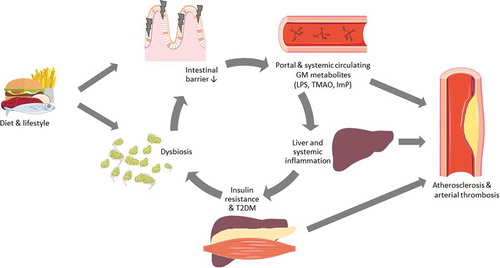Figures & data
Table 1. Cardiometabolic effects of specific bacteria.


